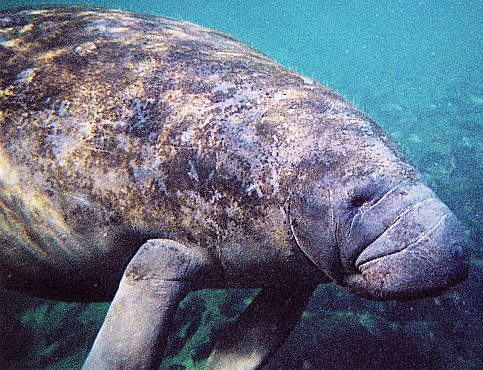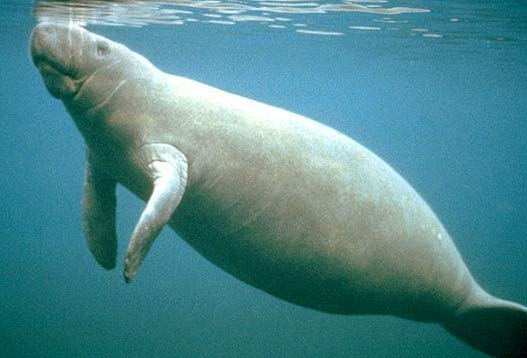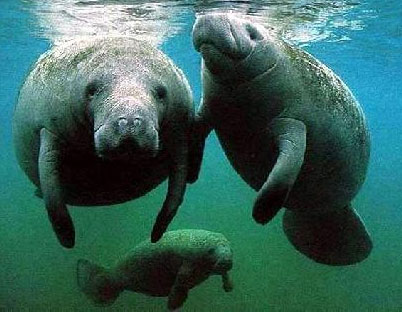Manatee of the Sea, The Sea Cow

There are 3 species of manatee, 2 of which live in fresh water in West Africa and the Amazon and the third in coastal waters of the tropical Atlantic Ocean.
The manatee has a heavier body than its cousin the dugong and is also distinguished by its oval, horizontal tail fluke. There are three nails in each of its flippers, which the it uses to gather food. It feeds at night, foraging by touch and smell. Its diet is quite varied, since it will eat any sort of vegetation and also often also takes in small invertebrate animals with the plants.

The manatee’s skin is generally gray or brown but the color varies according to the type and the amount of algae growing on it. It is often rough and many have scars from boat propellers.
For much of the day, the manatee lies on the sea or lake bed, rising every couple of minutes in order to breathe at the surface. Manatees are social animals and live in family groups, which sometimes gather together in larger herds. It is thought that they meet to communicate information about favorable places to eat.
The manatee has a large fat reserve and slow metabolism allowing it to semi-hibernate in the Amazon basin fasting for up to seven months during the dry season. They wait in the deeper parts of large lakes where there is not much food available. Others choose to enter the river systems and continue to find food but that option requires a lot of energy as they have to swim constantly in the rivers.

Not as much is known about the West African species. It can live along the coast, in estuaries, and in fresh water rivers and lakes. They have been observed traveling up to 25 miles (40 km) in one day.
It takes about a full year for a calf to be born. The calf may also be nursing for a year or two, so manatee mothers can only give birth once every 2 to 5 years. The calf is born in water and is helped by its mother to the surface to breathe.
There was a species related to the manatee called Steller’s sea cow that was much larger than the dugong or the manatee. Unfortunately, it became extinct shortly after its discovery in 1741 due to hunting. The manatee is now often called the sea cow, as it is the only marine mammal, along with the dugong, that grazes plants (mostly).

